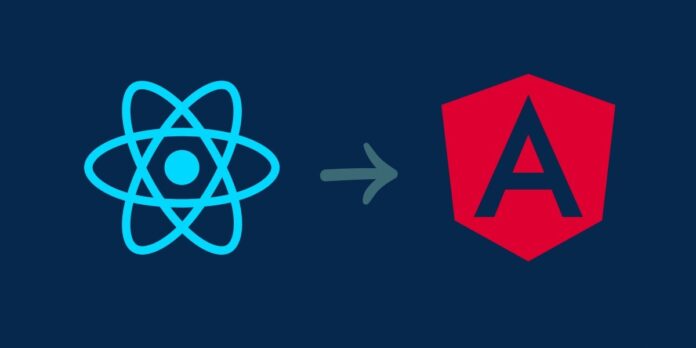Angular, developed and maintained by Google, stands as a leading framework for building dynamic and efficient web applications. Its robust nature and comprehensive approach allow developers to craft applications that are not only performant but also scalable. The framework’s consistent updates and community support have kept it at the forefront of web technology, making it a preferred choice for enterprises and individual developers alike. Angular’s architecture, which encourages modularity through the use of components, services, and dependency injection, helps in creating cleaner code that is easier to test and maintain over time
The framework is celebrated for its ability to improve productivity through a well-thought-out structure that includes a powerful CLI, a host of built-in functionalities like routing, forms, HTTP client, and an extensive suite of testing tools. These features significantly decrease the time and effort required to go from an idea to a fully functioning product. The commitment to maintaining a comprehensive environment means Angular developers can focus more on building the business logic of applications rather than wrestling with the intricacies of underlying technologies.
Moreover, Angular’s embrace of TypeScript brings static typing to JavaScript, which enhances the development experience with strong typing, classes, and interfaces. This adoption not only facilitates better tooling and IDE support but also improves collaboration among teams by making the code more predictable and easier to debug. Angular’s two-way data binding further streamlines the synchronization between the model and the view, allowing developers to write less boilerplate code and focus more on crafting rich user experiences.
Key Takeaways
- Angular is a leading framework for building efficient web applications, thanks to its modular architecture and community support.
- It enhances productivity with tools like a powerful CLI, built-in functionalities, and a comprehensive testing framework.
- Angular’s use of TypeScript improves development experience by offering static typing and better collaboration among teams.
- The framework supports seamless integration with backend services, ensuring effective communication and strong security measures.
- Angular provides robust deployment strategies and encourages partnerships to maximize development efficiency and application quality.
Table of contents
The Prototyping Phase in Angular
Prototyping is a phase where Angular particularly shines, offering tools that accelerate the creation and validation of application models. This early stage of development is crucial as it sets the foundation for the application’s architecture and functionality. Angular provides an environment conducive to quick adjustments and iterative development, which is essential during the prototyping phase. This flexibility allows teams to experiment with user interfaces and user experiences without committing extensive resources to early ideas.
Angular’s use of components enables developers to build encapsulated parts of the application that manage their own template and logic. This modularity is a boon during prototyping, as components can be reused and repurposed across the project without significant changes. Such an approach not only speeds up the development process but also enhances the consistency of the user interface across different parts of the application. The Angular CLI further supports rapid prototyping by generating boilerplate code, which simplifies project setup and configuration.
As the project evolves from a prototype to a full-fledged application, Angular’s robust ecosystem supports its growth seamlessly. The framework’s ability to integrate with other tools and technologies means that initial prototypes can be expanded and enhanced with additional features like animations, service workers, or third-party libraries without overhauling the core project. This ease of integration empowers developers to maintain momentum as projects scale from small prototypes to enterprise-level applications.
Streamlining Development with Angular
As the development process progresses, Angular aids developers with a suite of tools designed to enhance productivity and ensure high-quality outputs. Angular’s built-in functionalities, such as its form handling and HTTP client, streamline complex operations that otherwise would take substantial time to implement manually. These features not only save time but also reduce the likelihood of bugs, as they are backed by Angular’s extensive testing and optimization.
In any development project, maintaining code quality and consistency is paramount. Angular addresses this by providing a rich set of development guidelines and best practices through its official documentation. Adhering to these guidelines ensures that the code is not only functional but also clean and maintainable. The use of services and dependency injection in Angular promotes a decoupled architecture, where components remain lean and focused solely on the user interface, while business logic can be kept separate and reusable.
The focus on performance optimization is critical, especially as applications grow in scope and complexity. Angular facilitates this through features like Ahead-of-Time (AOT) compilation, which compiles HTML and TypeScript into efficient JavaScript during the build process rather than at runtime. This reduces the application’s load time and improves the runtime performance by pre-processing templates and other static data. Implementing lazy loading, another performance strategy, allows for loading feature modules only when they are needed, which can significantly improve the application’s efficiency.
Leveraging Angular Expertise Through Strategic Partnerships
To further maximize the benefits of Angular in project development, working with knowledgeable partners can be invaluable. Companies like Zibtek, renowned for their expertise in Angular, provide tailored solutions that accelerate development timelines and enhance application quality. Their seasoned developers bring a depth of experience in not only Angular but also in integrating the framework seamlessly with diverse business requirements, ensuring that the final product is not just functional but also aligns perfectly with client goals.
The collaboration with a dedicated Angular development company can alleviate many of the challenges associated with complex software projects. Such partnerships provide access to a broad array of skills and resources, facilitating a smooth development process from conception through to deployment and beyond. This support is crucial for businesses aiming to leverage technology to its fullest, ensuring that their digital tools are robust, scalable, and future-proof.
Integrating with Backend Services
Modern web applications are rarely standalone; they often rely on robust backend services for data management, authentication, and business processes. Angular’s HttpClient module provides developers with a powerful tool for communicating with backend APIs. This module simplifies complex HTTP operations and includes support for observable-based APIs, error handling, and interception, making it an indispensable tool for integrating frontend and backend layers seamlessly.
Effective communication between the frontend and backend is crucial for the responsiveness and scalability of an application. Angular’s observables and async pipes in templates provide a reactive framework that helps manage asynchronous data flows smoothly. This approach ensures that the user interface remains responsive and up-to-date with the latest data, enhancing the user experience. Error handling is also streamlined in Angular, as HttpClient works with error objects that can be easily manipulated to display user-friendly messages or perform recovery actions, thus improving the reliability of the application under various network conditions.
Moreover, Angular’s environment is designed to support advanced authentication and authorization techniques, which are essential for modern applications. Integrating security features such as OAuth, JWT, or session-based authentication is streamlined with Angular’s modular architecture, where interceptors can be used to inject tokens or handle HTTP headers globally. This setup ensures that security practices are centrally managed and consistently applied throughout the application, thereby reducing the risk of security breaches.
Testing and Quality Assurance
Ensuring the quality and stability of an application is paramount, and Angular provides a comprehensive testing framework that supports both unit and integration testing. Angular’s testing utilities, alongside frameworks like Jasmine and test runners like Karma, offer a robust environment for developers to write and execute tests. This comprehensive testing suite is essential for identifying issues early in the development cycle, which in turn maintains high code quality and application reliability.
Unit testing in Angular allows developers to test components, services, and pipes in isolation, using mock data and classes provided by Angular’s testing package. This method of testing is crucial for verifying the functionality of individual parts of the application without the interference of external dependencies. Angular’s dependency injection system makes it particularly easy to swap out real services with mock ones during testing, thus enabling a more controlled and predictable testing environment.
Integration testing, on the other hand, checks how different parts of the application work together. For this, Angular offers the TestBed utility, which configures and initializes environments similar to how the application runs in production. This allows developers to ascertain that the entire application will function correctly as a cohesive unit, not just in isolation. Such tests are crucial for uncovering integration issues that might not be visible during unit testing.
Deployment and Continuous Integration
The deployment process is the final hurdle in the application development lifecycle, and Angular is equipped to handle this with tools that automate and streamline the deployment pipeline. The Angular CLI, for instance, includes built-in support for building production-ready applications, minimizing the files needed for deployment through techniques like tree shaking, which eliminates unused code, and minification, which reduces file size.
Employing continuous integration (CI) and continuous deployment (CD) methodologies with Angular ensures that updates to your application are developed, tested, and released systematically and without disruptions to the service. Tools such as Jenkins, CircleCI, or GitHub Actions can be integrated into the Angular project setup to automate testing and deployment processes. This automation is crucial for maintaining the integrity of the application as it ensures that any change to the codebase is tested before being deployed to production environments.
Angular’s support for progressive web apps (PWA) and server-side rendering (SSR) via Angular Universal further aids in optimizing the deployment strategy. These technologies improve the performance and user experience of Angular applications on various platforms, including mobile devices and low-bandwidth environments, ensuring that all users receive a fast and engaging experience regardless of their entry point.
Implementing Angular SEO practices, such as server-side rendering with Angular Universal and properly managing meta tags, ensures that your application is not only fast and interactive but also discoverable by search engines.
Final Thoughts
Angular’s comprehensive ecosystem, from prototyping tools to deployment strategies, offers a robust framework for developing dynamic and complex web applications. Its integrated approach, emphasizing modularity, performance, and maintainability, makes it an ideal choice for projects of any scale. By following Angular’s best practices and leveraging partnerships with seasoned developers, businesses can harness the full potential of this powerful framework, achieving optimal outcomes for their web development initiatives. Whether you are building a small internal tool or a large-scale enterprise solution, Angular provides the tools and community support to ensure success in the digital landscape.











